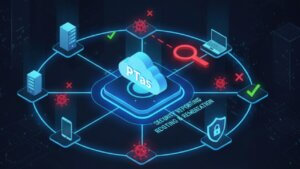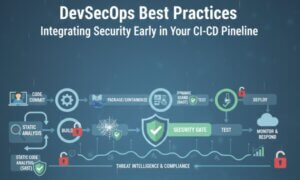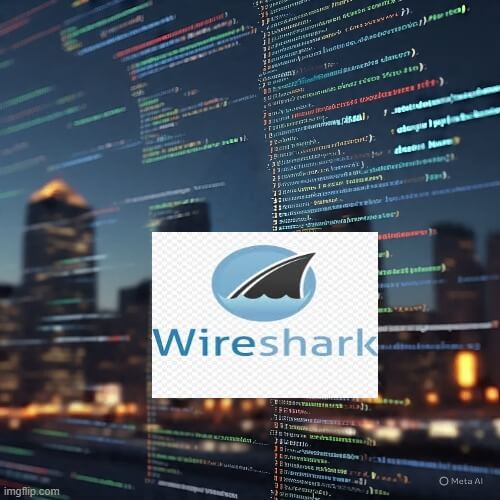Wireshark, one of the most trusted and widely used network protocol analyzers in the world, has been found to contain a critical vulnerability that could allow attackers to launch denial-of-service (DoS) attacks. The flaw, officially tracked as CVE-2025-5601, has already raised concerns across IT and cybersecurity communities—especially for enterprises that rely on Wireshark for real-time monitoring and incident response.
In this post, we break down everything you need to know about the vulnerability, how it works, what versions are affected, and what you should do to protect your environment.
Book Your FREE Cybersecurity Consultation Today!
Overview of the Vulnerability
CVE ID: CVE-2025-5601
Wireshark Advisory ID: wnpa-sec-2025-02
Published Date: June 4, 2025
CVSS Score: 7.8 (High Severity)
CWE Category: CWE-120 – Buffer Copy Without Checking Size of Input
This vulnerability stems from a bug in Wireshark’s column utility module. When certain network dissectors process malformed or corrupted packets, the application crashes due to a classic buffer overflow condition. This poses a serious risk, particularly in environments where Wireshark is used for live monitoring of production networks.
How the Attack Works
Security researchers have identified two primary vectors by which this vulnerability can be exploited:
1. Malformed Packet Injection
Attackers can inject maliciously crafted packets directly into the network. If Wireshark is actively monitoring traffic on that network, it will attempt to parse the malformed data, triggering a crash.
2. Corrupted Capture Files
An attacker can also create a specially crafted .pcap file containing malformed packets and send it to a victim. Opening this file in Wireshark will immediately crash the application, disrupting any ongoing analysis or investigation.
This vulnerability could be weaponized in spear-phishing campaigns or insider threats, where a user might be tricked into analyzing a malicious capture file.
The Impact On Organizations
The primary impact of this flaw is a denial-of-service condition. While it does not allow remote code execution or privilege escalation, a successful exploit can:
Interrupt live packet analysis
Disrupt incident response workflows
Temporarily disable network monitoring
Given Wireshark’s widespread use in SOCs (Security Operations Centers), NOCs (Network Operations Centers), and incident response teams, the disruption potential is considerable.
Wireshark Vulnerability: Affected Versions
The vulnerability affects the following Wireshark versions:
4.4.0 through 4.4.6
4.2.0 through 4.2.11
If you’re running any of these versions, your system is at risk.
Mitigation and Patching
The Wireshark Foundation has acted swiftly by releasing patched versions that fix this issue:
Wireshark 4.4.7
Wireshark 4.2.12
These updates were released on June 4, 2025, simultaneously with the public disclosure of the vulnerability.
Recommended Actions:
Update Wireshark immediately to version 4.4.7 or 4.2.12.
Verify the source of all
.pcapfiles before opening them.Restrict packet capture to trusted sources and segments.
Segment your network to limit exposure and isolate critical systems.
What Security Experts Are Saying
Although the Wireshark Foundation confirmed that the flaw was discovered internally and that “no exploits have been observed in the wild,” security professionals are urging caution. The low complexity of exploitation combined with the popularity of Wireshark makes this a serious concern.
Organizations that rely on Wireshark for real-time detection, compliance auditing, and forensic investigations should consider this vulnerability as a high-priority issue.
Final Thoughts
Wireshark remains an essential tool for network diagnostics, but this incident highlights a universal truth in cybersecurity: no tool is immune from vulnerabilities.
Timely updates, cautious file handling, and proper network segmentation are critical to mitigating risks. If you haven’t updated yet, now is the time.
Why Businesses Trust SecureMyOrg for Comprehensive Network Security
At SecureMyOrg, we uncover and fix all possible security vulnerabilities of mobile and web, while providing solutions to mitigate risks. We are trusted by renowned companies like Yahoo, Gojek and Rippling, and with 100% client satisfaction, you’re in safe hands!







Some of the things people reach out to us for –
- Building their cybersecurity program from scratch – setting up cloud security using cost-effective tools, SIEM for alert monitoring, building policies for the company
- Vulnerability Assessment and Penetration Testing ( VAPT ) – We have certified professionals, with certifications like OSCP, CREST – CPSA & CRT, CKA and CKS
- DevSecOps consulting
- Red Teaming activity
- Regular security audits, before product release
- Full time security engineers.
Relevant Posts

What Is Penetration Testing as a Service?
Penetration testing as a service (PTaaS) lets experts simulate real attacks to uncover vulnerabilities before hackers do. This guide explains the process, benefits, and costs, helping businesses strengthen defenses with predictable, ongoing security checks.

How To Inspect Encrypted Traffic Without Breaking Privacy
Network administrators face a challenge: securing systems while respecting privacy. This guide explains how to inspect encrypted traffic without breaking privacy using metadata, anomaly detection, and machine learning ensuring visibility, compliance, and trust.

How to Audit Infrastructure as Code (IaC) for Security Vulnerabilities
Discover how to audit Infrastructure as Code (IaC) for security vulnerabilities with this practical guide. Learn to scan IaC files using tools like Checkov, fix issues like exposed resources, and integrate audits into CI/CD pipelines. Protect your cloud systems from misconfigurations and ensure compliance with clear, actionable steps.

DevSecOps Best Practices: Integrating Security Early in Your CI/CD Pipeline
This article provides a practical guide to embedding security into every stage of your CI/CD pipeline. Learn core DevSecOps best practices like SAST, DAST, dependency scanning, secrets management, and compliance automation to catch vulnerabilities early, foster a culture of shared ownership, and build a secure-by-design development process that accelerates release cycles.

5 Cloud Misconfigurations That Lead to Data Breaches
Cloud misconfigurations are one of the leading causes of data breaches, yet they’re also among the most preventable. From exposed storage buckets to weak IAM policies, attackers exploit these mistakes daily. Learn about the top 5 misconfigurations and how your organization can fix them before they lead to costly data exposure.

How Can Ethical Hacking Training Elevate Your Internal Cybersecurity?
Ethical hacking training empowers organizations to strengthen internal cybersecurity by uncovering vulnerabilities before attackers do. From mastering penetration testing to enhancing incident response, this training builds a proactive security culture. Learn how Secure My ORG’s programs can elevate your team’s skills and fortify defenses against modern threats like AI-driven attacks.

